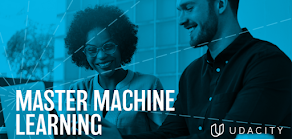Colleagues, the Machine Learning with PyTorch program you will learn foundational machine learning techniques -- from data manipulation to unsupervised and supervised algorithms. Skill-based training modules include: 1) Supervised Learning - Naive bayes classifiers • Model evaluation • Support vector machines • Decision trees • Convolutions • scikit-learn • Perceptron • Categorical data visualization • Statistical modeling fundamentals • Chart types • Quantitative data visualization • Linear regression • Spam detection • Logistic regression • Professional presentations • Hyperparameter tuning, 2) Introduction to Neural Networks with PyTorch - Gradient descent • AI algorithms in Python • Training neural networks • NumPy • Backpropagation • Overfitting prevention • Deep learning fluency • PyTorch, 3) Unsupervised Learning - Gaussian mixture models • Single linkage clustering • K-means clustering • Dimensionality reduction • Audience segmentation • Cluster models • Principal component analysis • Independent component analysis • Density-based spatial clustering of applications with noise, 4) Introduction to Machine Learning and setup your computer with Python 3 using Anaconda, as well as setting up a text editor, 5) Supervised Learning - learn about different types of supervised learning and how to use them to solve real-world problems - Before diving into the many algorithms of machine learning, it is important to take a step back and understand the big picture associated with the entire field, Linear Regression - Linear regression is one of the most fundamental algorithms in machine learning. In this lesson, learn how linear regression works, Perceptron Algorithm - an algorithm for classifying data. It is the building block of neural networks, 6) Decision Trees - a structure for decision-making where each decision leads to a set of consequences or additional decisions, Naive Bayesian Algorithms are powerful tools for creating classifiers for incoming labeled data. Specifically Naive Bayes is frequently used with text data and classification problems, Support Vector Machines, Support vector machines are a common method used for classification problems. Ensemble Methods, Bagging and boosting are two common ensemble methods for combining simple algorithms to make more advanced models that work better than the simple algorithms would on their own, Model Evaluation Metrics, Learn the main metrics to evaluate models, such as accuracy, precision, recall, and Training and Tuning - Learn the main types of errors that can occur during training, and several methods to deal with them and optimize your machine learning models. You've covered a wide variety of methods for performing supervised learning -- now it's time to put those into action, and 6) Introduction to Neural Networks with PyTorch - Learn the fundamentals of neural networks with Python and PyTorch, and then use your new skills to create your own image classifier.
Enroll today (teams & executives are welcome): https://tinyurl.com/2kdsm5xh
Download your free AI-ML-DL - Career Transformation Guide.
For your listening-reading pleasure:
1 - “AI Software Engineer: ChatGPT, Bard & Beyond” (Audible) or (Kindle)
2 - “ChatGPT - The Era of Generative Conversational AI Has Begun” (Audible) (Kindle)
3 - “ChatGPT, Gemini and Llama - The Journey from AI to AGI, ASI and Singularity” (Kindle) or (Audible - coming soon!)
Much career success, Lawrence E. Wilson - AI Academy (share with your team)

.jpg)
.jpeg)


No comments:
Post a Comment